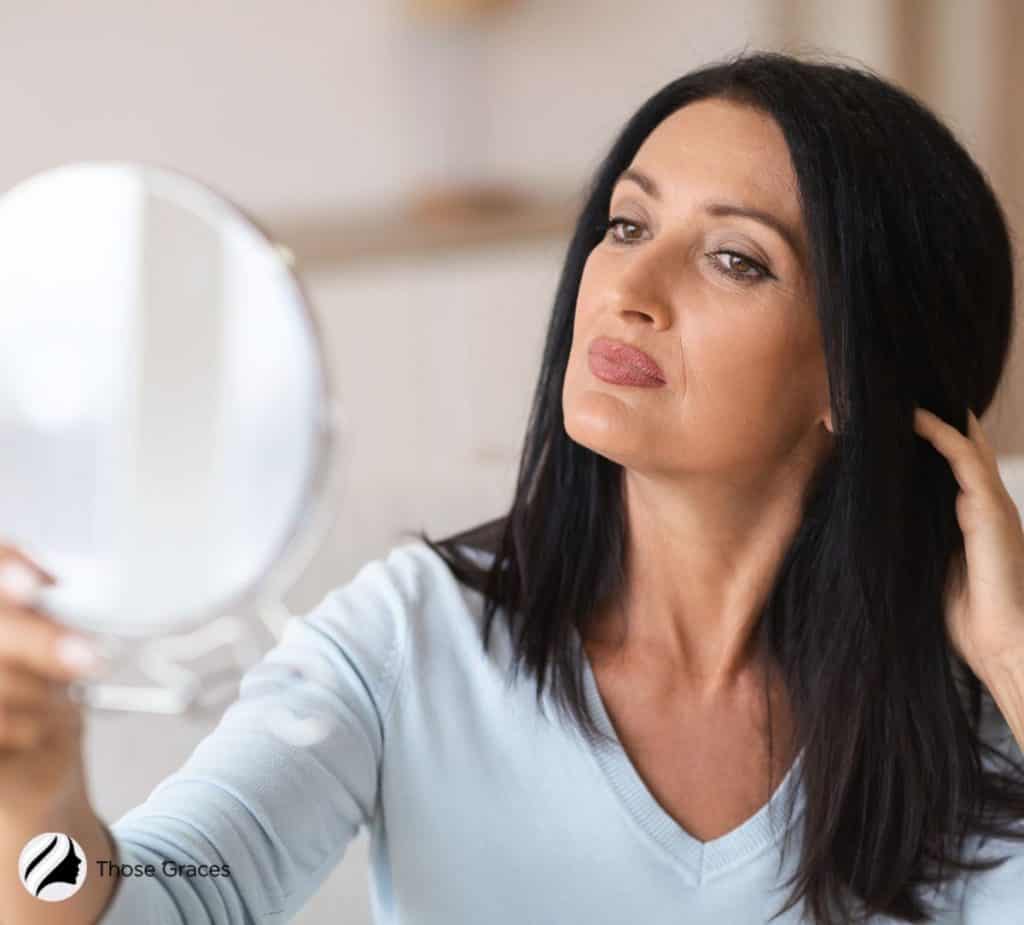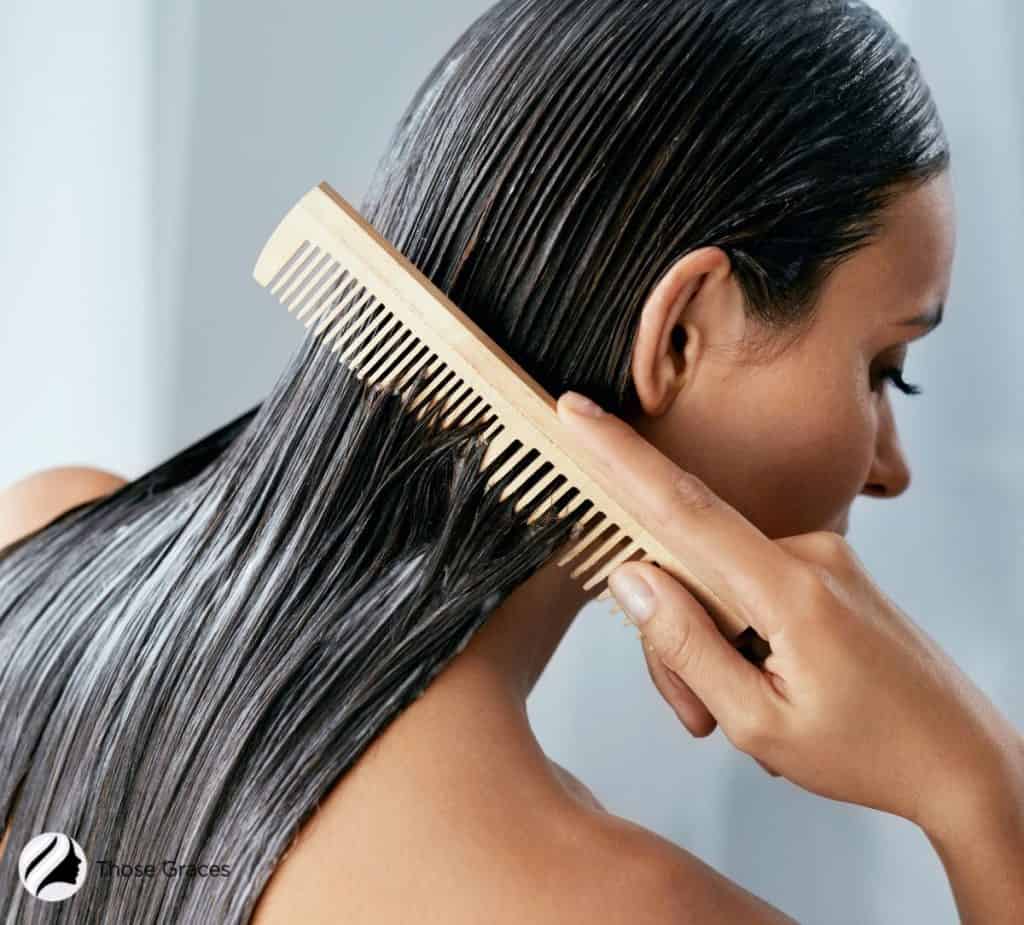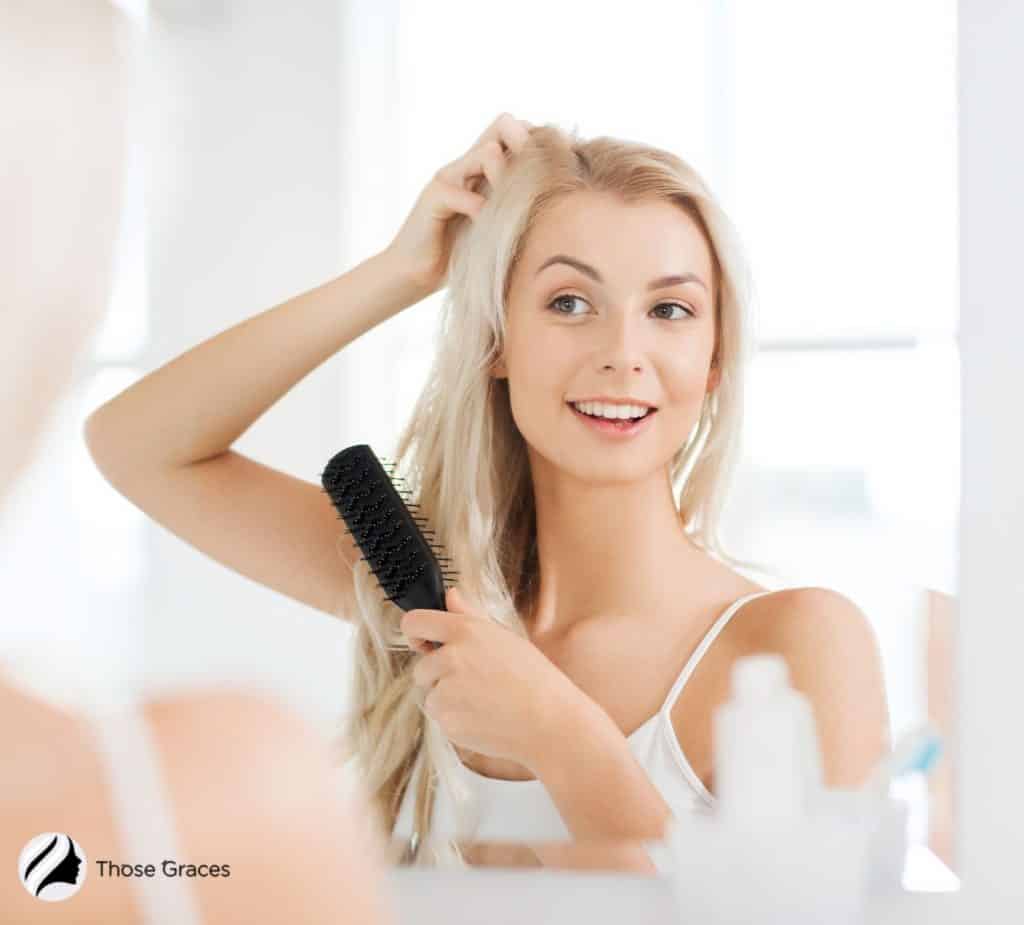My hair is really important to me, and I want to be able to take excellent care of it so that it remains bouncy and soft.
Like most people, I’ve suffered from damaged hair and been afraid I can’t fix it. But how long does it take for damaged hair to repair?
The time it takes to repair damaged hair depends on the severity, which means you are looking at anywhere from six months to a year before seeing a change. Using nourishing products and a strong hair care routine goes a long way.
In this guide, I will share my experiences to help you learn more about the recovery process for hair.
Key Takeaways:
- Damage to our hair can come in many ways, but the most common is excessive styling and coloring.
- The severity of the damage will determine how long it takes for the hair to recover.
- Several ways to speed up the hair recovery process include using a hair mask or switching to a sulfate-free shampoo.
- It is essential to keep your hair healthy and strong by using a good conditioner and avoiding products that contain alcohol.
How Long for Damaged Hair to Recover?
You can speed up repairing damaged hair by using products that NOURISH your scalp and hair. However, it will take at least six months to a year to see a difference in the health of your hair [1].

Pro Tip: Using high-quality, nourishing products is ESSENTIAL for repairing damaged hair and growing healthy hair.
6 Tips for Repairing Damaged Hair
I have some great advice for REPAIRING your damaged hair. It can be a process, and you’ll need to be patient, but these tips and tricks will help your hair feel amazing again soon.
1. Get the Split Ends Trimmed
The first step to repairing damaged hair is to get the RID of the split ends. This will help prevent further damage and make your hair look and feel healthier overall.
Pro Tip: It’s a myth that you can repair split ends; the truth is that they just creep up the hair strand and ruin it completely. A quick snip is the only form of repair.
2. Use Products That are Gentle and Non-Drying
The next step is to find and use gentle, non-drying products. These will help to NOURISH your hair and prevent further damage.

Damaged hair structure often results in FRIZZY hair, which can be difficult to tame and maintain. Chemical treatments can worsen things, so a homemade hair mask is often the best bet for something gentle.
3. Protect Your Hair from the Sun and Heat
One of the best ways to prevent damage is to PROTECT your hair from the sun and heat; fine hair is especially at risk. This can be done by wearing a hat or using a heat protectant spray.
4. Use a Strengthening Conditioner
Another great way to repair damaged hair is to use a strengthening conditioner. This will help to SMOOTH the damaged hair and make it more manageable.
Recognizing the “signs of heat damaged hair” early can be pivotal in preventing further damage and opting for the right treatments.
Deep conditioner usually contains coconut oil, which is GREAT for your hair health. Shampoo and conditioner containing natural oils such as olive and almond oil are excellent for helping repair hair.
However, understanding the “difference between healthy hair and damaged hair” is crucial. While both may sometimes feel dry, damaged hair often has more prolonged and pronounced symptoms, like split ends, loss of elasticity, and excessive breakage.
Regularly using these beneficial products can help bridge the gap between damaged and healthy hair.
5. Be Gentle When Brushing and Styling
Finally, you need to be GENTLE when brushing and styling your hair. This will help to avoid further damage and breakage.
Heat styling can cause DRY hair, which can be pretty tough on your hair follicles. This is especially true for oily hair; heat styling should be limited to a few times a week if you want to repair hair.

Pro Tip: If you use a flat iron or blow dryer, only use it on damp hair, not wet. This is because it can cause serious heat damage and even burn hair strands that are wet.
6. Nourish Your Follicles to Encourage Growth
It is also essential to nourish your follicles to ENCOURAGE growth. This can be done by using a scalp mask or oil treatment.
Healthy hair growth is encouraged by using hair masks and natural oils on your hair to help nourish it. You can ALSO use deep conditioning treatments to strengthen the hair shaft for new growth.
What Causes Damaged Hair?
Several things can cause damage to your hair. The most common are as follows:
- Excessive styling
- Excessive coloring
- The sun and chlorine
- Lack of moisture
- Exposure to heat
- Lack of brushing
- Drying wet hair with heat tools
It is important to note that while coloring your hair can be fun, bleached hair can be damaging over TIME.
It can even make your natural hair color dull, making it harder to retain color.
Since hair damage can have a MASSIVE impact on your hair texture and the health of the hair cuticle, it’s essential to stay on top of things.
FAQs
Is Hair Damage Permanent?
How Can I Tell If My Hair Is Damaged?
Why Does My Hair Feel Healthier After Cutting It?
Conclusion
Damaged hair doesn’t have to be permanent! With time, PATIENCE, and the right products, you can repair your damaged hair and get it looking and feeling healthier than ever before.
Be sure to use a nourishing conditioner, PROTECT your hair from the sun, and be gentle when brushing and styling.
I hope this guide has been able to help you begin your journey to repairing your damaged hair and loving yourself a little more.
Did you find the guide helpful? Let us know in the comments section!
Sources:
- 1. Kaushik V, Chogale R, Mhaskar S. Alternative protocol for hair damage assessment and comparison of hair care treatments. International Journal of Trichology. 2020;12:7.


![How To Curl Short Hair With A Straightener [10 Best Ways]](https://thosegraces.com/wp-content/uploads/2024/07/How-To-Curl-Short-Hair-With-A-Straightener-211x150.jpg)
